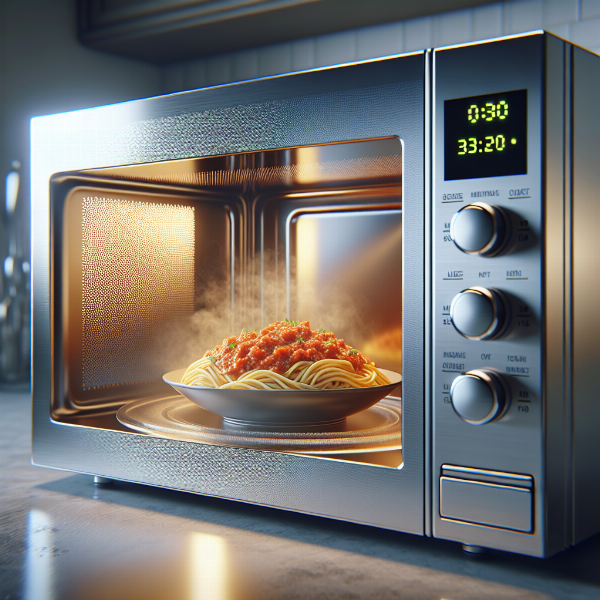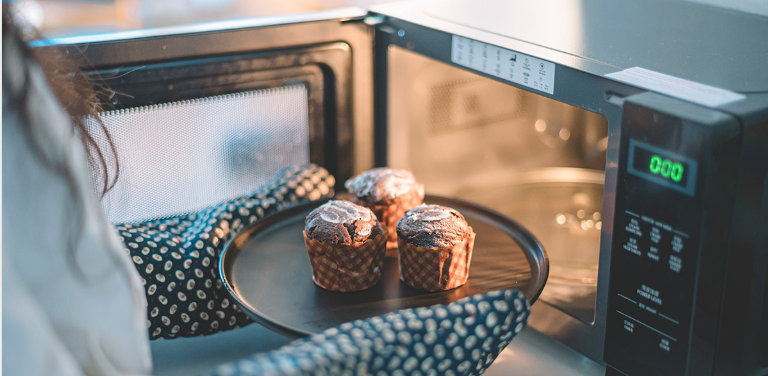Sensor cooking microwaves offer a convenient way to heat and cook food without the guesswork of manually setting power levels and times. But how do these smart appliances work, and how can you get the most out of yours? This comprehensive guide will delve into the world of microwave ovens with sensor cooking, exploring their benefits, features, and maintenance tips, empowering you to become a sensor cooking pro.
How Does a Sensor Microwave Oven Work?
A sensor microwave oven uses humidity sensors to detect the steam released by food as it cooks. These sensors then automatically adjust the cooking time and power level to ensure optimal results. No more guessing games or overcooked meals! Instead of relying on preset times, the microwave “listens” to your food and adjusts accordingly.
Benefits of Using a Microwave Oven with Sensor Cooking
- Perfectly Cooked Food: Say goodbye to overcooked edges and cold spots. Sensor cooking delivers consistently perfect results, whether you’re reheating leftovers or cooking a full meal.
- Time-Saving Convenience: Sensor cooking frees you from constantly checking on your food. Simply select the appropriate sensor setting, and let the microwave do the rest.
- Energy Efficiency: By precisely controlling the cooking process, sensor microwaves can use less energy compared to manual operation.
 A modern microwave oven with sensor cooking technology perfectly reheating a plate of pasta
A modern microwave oven with sensor cooking technology perfectly reheating a plate of pasta
Common Sensor Cooking Settings and Their Uses
Reheat
This setting is ideal for reheating previously cooked food. The sensor detects the steam released as the food warms up, ensuring even heating without drying it out.
Popcorn
The popcorn setting is optimized for popping pre-packaged microwave popcorn. The sensor monitors the popping rate and stops the microwave when the popping slows down, preventing burnt popcorn.
Vegetables
This setting is designed for cooking fresh or frozen vegetables. The sensor ensures that vegetables are cooked to perfection, retaining their nutrients and texture.
Beverages
The beverage setting is perfect for heating liquids like coffee, tea, or hot chocolate. The sensor prevents overheating and ensures your drinks are at the ideal temperature.
Troubleshooting Your Sensor Microwave Oven
Food Isn’t Cooking Properly
- Check the Sensor: Make sure the humidity sensor inside the microwave is clean and unobstructed. Wipe it gently with a damp cloth.
- Food Placement: Ensure the food is placed correctly on the turntable and not too close to the walls of the microwave.
- Container Type: Use microwave-safe containers and avoid using metal or foil.
The Microwave Runs for Too Long or Too Short
- Sensor Calibration: Some microwaves allow you to calibrate the sensor. Refer to your owner’s manual for instructions.
- Food Density: Dense foods may require a longer cooking time. Experiment with adding a few extra seconds if necessary.
Maintaining Your Microwave Oven with Sensor Cooking
- Regular Cleaning: Keep the interior of your microwave clean by wiping it down after each use. This prevents food splatters from interfering with the sensor.
- Avoid Overloading: Don’t overcrowd the microwave. This can affect the sensor’s ability to accurately detect the steam released by the food.
- Proper Ventilation: Ensure adequate ventilation around the microwave to prevent overheating.

A person carefully wiping the clean interior and humidity sensor of a modern microwave oven
Tips for Getting the Most Out of Sensor Cooking
- Covering Food: Covering food with a microwave-safe lid or vented plastic wrap can help retain moisture and improve cooking results.
- Stirring Food: Stirring food halfway through the cooking process can help ensure even heating, especially for larger items.
- Experimenting with Settings: Don’t be afraid to experiment with different sensor settings to find what works best for your preferred cooking style.
“Sensor cooking truly revolutionizes the microwave experience. It takes the guesswork out of cooking and delivers consistently delicious results,” says Amelia Hernandez, a culinary expert and author of “The Modern Microwave Cookbook.”
“Maintaining your sensor microwave is crucial for its longevity and optimal performance. Regular cleaning and proper usage will ensure your appliance continues to deliver perfect meals for years to come,” adds David Lee, a certified appliance technician with over 20 years of experience.
Conclusion
A Microwave Oven With Sensor Cooking offers a convenient and efficient way to prepare delicious meals. By understanding how sensor cooking works and following these maintenance tips, you can unlock the full potential of your appliance and enjoy perfectly cooked food every time. Ready to elevate your microwave cooking game? Explore our range of sensor Microwave Ovens at [internal link to relevant page].
Frequently Asked Questions
- What is the difference between sensor cooking and conventional microwave cooking? Sensor cooking uses humidity sensors to automatically adjust cooking time and power, while conventional microwave cooking requires manual input.
- Can I use any type of container in a sensor microwave? Use only microwave-safe containers. Avoid metal, foil, and some plastics.
- How do I clean the humidity sensor in my microwave? Gently wipe the sensor with a damp cloth. Avoid using abrasive cleaners.
- What should I do if my sensor microwave isn’t cooking food properly? Check the sensor for cleanliness, ensure proper food placement, and use appropriate containers.
- Why is my sensor microwave running for too long or too short? Check the sensor calibration, consider food density, and refer to your owner’s manual for troubleshooting tips.
- How often should I clean my sensor microwave? Wipe down the interior after each use to prevent food build-up and ensure optimal sensor performance.
- Can I adjust the cooking time during sensor cooking? Most sensor microwaves do not allow adjustments during the cooking cycle, as the sensor automatically determines the appropriate time.